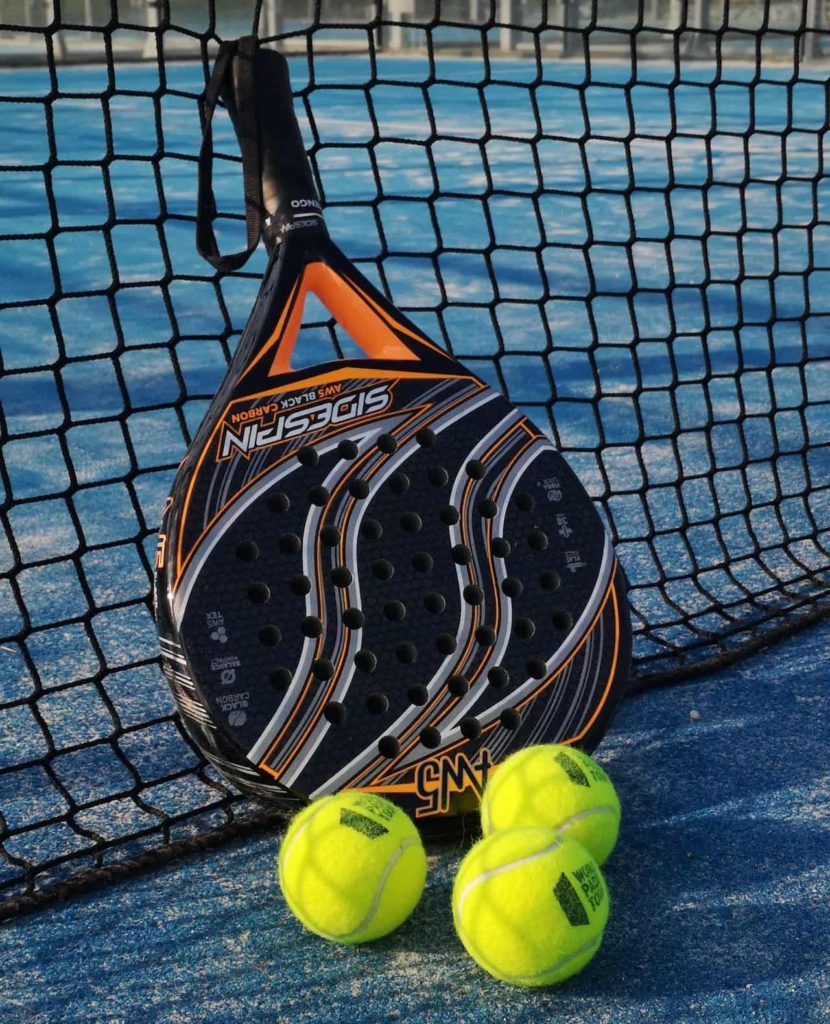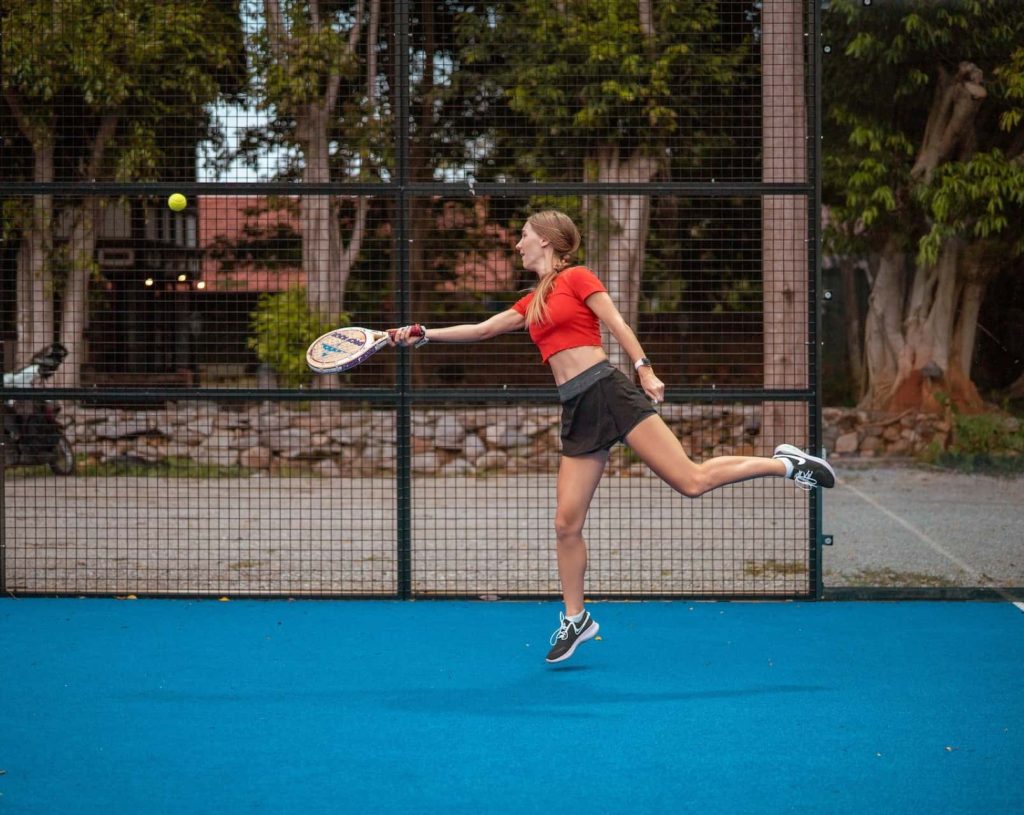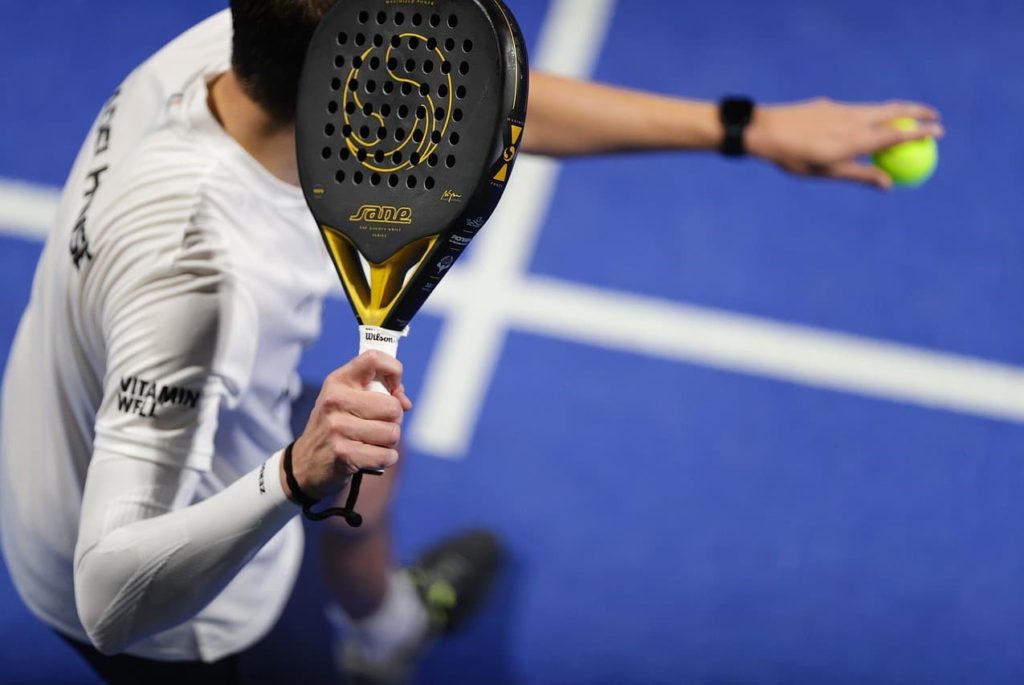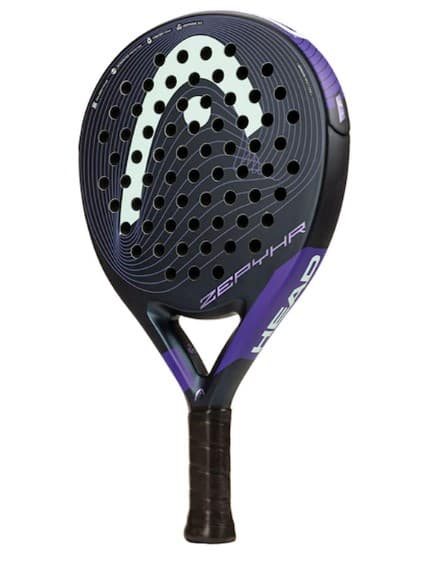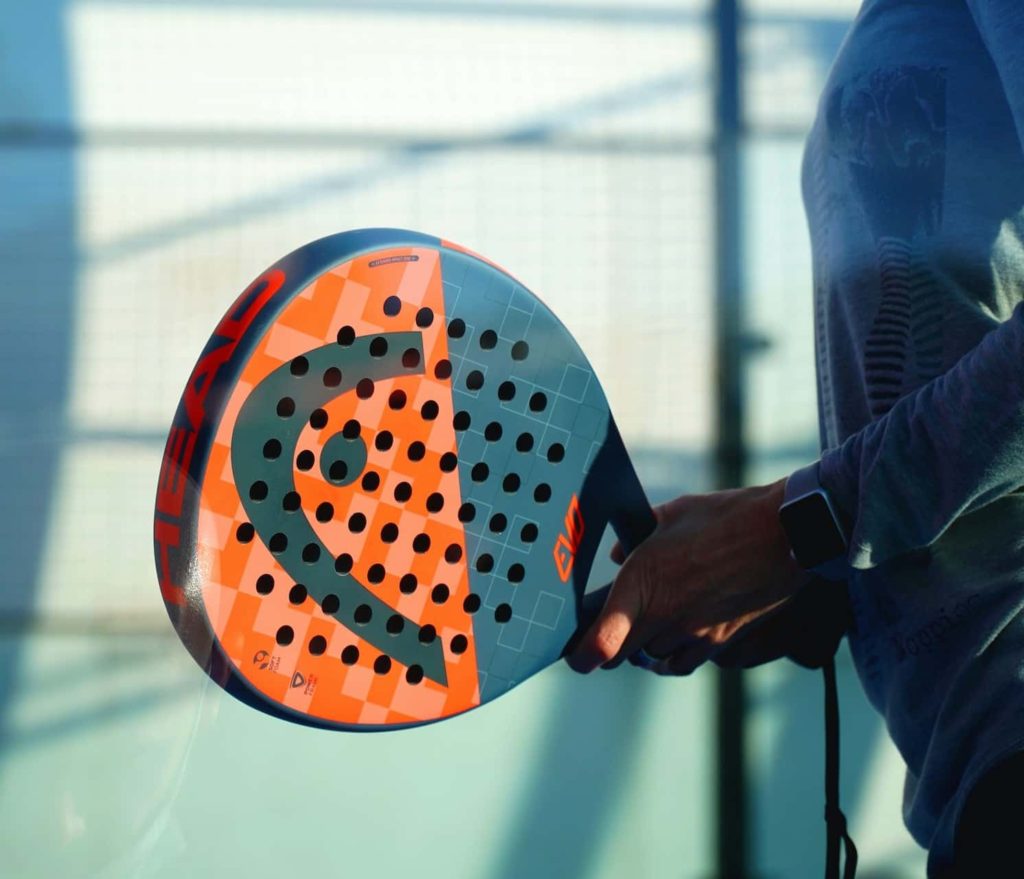Padel Tennis
When it comes to exhilarating racket sports, there is one that has been gaining momentum in recent years – padel tennis (also called paddle tennis). This fast-paced and dynamic sport offers a unique blend of skill, strategy, and athleticism, captivating players and spectators alike. With its roots tracing back to the early 20th century in the United States, padel tennis has evolved into an internationally beloved sport that continues to attract enthusiasts from all walks of life.
A Thrilling Blend of Tennis and Platform Tennis
Padel tennis emerged as a variant of traditional lawn tennis in the early 20th century. Its development was heavily influenced by platform tennis and squash, which are known for their fast-paced nature and strategic shot placement. As it grew in popularity padel tennis became recognized for its smaller court dimensions and unique rules that set it apart from its counterparts.
Unlike traditional tennis played on expansive courts with high nets, padel tennis is typically played on courts measuring 50 feet long by 20 feet wide. The smaller court size results in more intense exchanges between players, requiring quick reflexes and agile footwork.
The lower net height of around 31 inches adds an additional challenge that demands precise shot execution. The solid walls surrounding the court make this sport reminiscent of squash but with a distinct flavor.
The Global Rise of Padel Tennis
Although padel tennis originated in the United States, it has transcended borders to become an internationally beloved sport. In recent years especially, its popularity has skyrocketed worldwide as more players discover its excitement and accessibility. Padel tennis can now be found not only in North America but also across Europe, South America, Asia, and beyond.
The growing appeal of padel tennis can be attributed to several factors. Firstly, its compact court size makes it highly adaptable to different environments allowing for the creation of new facilities even in densely populated urban areas where traditional tennis may be impractical.
Additionally, the sport’s emphasis on tactics and strategy makes it appealing to players of all ages and skill levels. Whether you are a seasoned athlete or a beginner looking for an engaging recreational activity, padel tennis offers something for everyone.
Moreover, the growing accessibility of padel tennis equipment and facilities has contributed to its rise in popularity. With advancements in manufacturing techniques, high-quality padel tennis racquets made from materials such as carbon fiber and fiberglass are now readily available.
This availability ensures that players can enjoy optimal performance while showcasing their skills on the court. As more people discover the thrill of padel tennis, it’s clear that this sport is here to stay.
Its unique blend of athleticism, strategy, and accessibility has firmly established it as a beloved pastime across continents. Whether you seek an exhilarating challenge or simply wish to engage in a fun activity with friends and family, padel tennis is bound to captivate you with its fast-paced action and strategic gameplay.
Historical Background
Origins of Padel Tennis in the Early 20th Century
padel tennis traces its origins back to the early 20th century. It emerged as a unique variation of traditional tennis, offering players an alternative way to enjoy the thrill of racquet sports. It was during this period that innovative minds sought to create a more accessible and engaging version of tennis, suitable for different environments and demographics.
Developed in the United States as a Variation of Tennis
The development of padel tennis or paddle tennis can be attributed to the creative minds in the United States who envisioned a modified version of tennis. The sport’s roots can be traced back to Manhattan Beach, California, where it first gained prominence in the 1920s.
Padel tennis quickly captivated local communities due to its fast-paced nature and ability to be played on smaller courts compared to traditional tennis. This novel adaptation aimed at providing players with an intense and dynamic experience by altering various aspects of conventional lawn tennis.
The court dimensions were reduced significantly, enabling matches to take place in tight spaces such as urban areas or residential backyards. This modification not only enhanced accessibility but also created a distinct playing style characterized by quick reflexes and strategic shot placement.
Influenced by other Racket Sports Like Platform Tennis and Squash
While padel tennis took inspiration from traditional lawn tennis, it was also heavily influenced by other racket sports prevalent during that era. Platform tennis and squash played crucial roles in shaping the development and rules of padel tennis.
Platform Tennis, often referred to as “padel,” introduced players to new techniques and strategies involving solid padels rather than traditional stringed rackets. This influence is evident in padel tennis’s use of solid wooden or composite padels instead of standard stringed racquets.
The durability and unique characteristics of these padels added an extra layer of excitement to the game. Additionally, the influence of squash can be seen in the innovative court layout and specific shot selection.
padel tennis adopted a smaller court size akin to squash which necessitated players to rely on precise shot placement rather than sheer power. The strategic use of lob shots, volleys, and drop shots became integral components of padel tennis gameplay which are influenced by the tactics employed in both platform tennis and squash.
The amalgamation of ideas from various racket sports resulted in a distinct sport that combines elements from traditional tennis with its own set of rules and strategies. Padel tennis has succeeded not only in capturing the interest of players seeking a thrilling alternative but also in establishing itself as a unique entity within the realm of racket sports.
Court Dimensions and Layout
A Unique Playing Space
Padel tennis courts offer a distinctive playing space that sets the stage for exciting matches. These courts are smaller than traditional tennis courts, measuring approximately 50 feet long by 20 feet wide.
The reduced dimensions create a more intense and fast-paced game, where players have to be nimble and quick in their movements. This compactness adds an element of intensity, making each point highly engaging for both players and spectators. In addition to the smaller size, padel tennis courts feature a lower net height compared to regular tennis courts.
Traditionally the net is set at around 31 inches from the ground. This lower net allows for dynamic net play and encourages players to employ skilled volleys and touch shots. It also offers a unique challenge as players need to adapt their tactics due to the reduced vertical clearance over the net.
Padel Tennis Racquets
A Perfect Balance of Power and Control
Padel tennis racquets are specifically designed to be well-suited for this fast-paced sport. They are made using a variety of materials such as wood or composite materials like carbon fiber or fiberglass. These materials give the racquets durability while maintaining their lightweight nature.
Compared to regular tennis racquets, padel tennis racquets are generally smaller in size, ensuring greater maneuverability on the court. The smaller head size enables players to have better control over their shots, allowing them to place the ball with precision.
To further optimize performance on windy days or in outdoor settings, padel tennis racquets often feature a perforated padel surface. These small holes reduce wind resistance during strokes, enabling players to maintain better accuracy even in challenging weather conditions.
Ball Specifications
A Modified Pace for Enhanced Strategy
The balls used in padel tennis differ slightly from those in regular tennis, offering a unique playing experience. Padel tennis balls are slightly depressurized compared to their traditional counterparts.
This deliberate modification slows down the ball’s pace, allowing for longer rallies and strategic shot placement. Typically made of rubber or felt material, padel tennis balls ensure a consistent bounce while providing just the right amount of grip on the court surface.
This balance between bounce and grip allows players to execute various shots effectively, including powerful drives and delicate drop shots. The modified ball characteristics in padel tennis contribute to a more strategy-driven style of play.
With slower-paced rallies and greater control over shot placement, players can plan their moves with precision, focusing on outmaneuvering their opponents rather than relying solely on raw power. By understanding the intricacies of court dimensions, racquet design, and ball specifications in padel tennis, players can fully immerse themselves in this captivating sport.
These carefully crafted elements contribute to an exhilarating game that demands skillful maneuvering and strategic thinking. Whether you’re new to padel tennis or a seasoned player looking for an extra challenge, embracing these unique features will undoubtedly enhance your overall experience on the court.
Gameplay and Scoring System
Serving Rules
When it comes to serving in padel tennis, there are specific rules that players must adhere to. Unlike in traditional tennis where the overhead serve is commonly used, padel tennis requires an underhand serving technique like in pickleball.
This deliberate modification levels the playing field and places a greater emphasis on accuracy and placement rather than power. The serve must be directed diagonally into the opponent’s service box.
Rallying and Shot Selection
The essence of padel tennis lies in its emphasis on strategic shot placement over brute force. Players must carefully analyze their opponents’ positions on the court and execute shots that will challenge their opponents’ defensive capabilities. Lob shots are a common tactic used to put pressure on opponents by forcing them back near the baseline.
Volleys that are executed close to the net require quick reflexes and precision. Drop shots, which involve hitting soft touch shots that barely clear the net, can catch opponents off guard and create scoring opportunities.
Scoring System
In terms of the scoring system, paddle tennis closely follows traditional tennis with minor variations such as being able to use the surrounding fence. Each game is played using a points-based system: Love (0), Fifteen (15), Thirty (30), Forty (40).
If both teams reach 40 points, it results in a Deuce—a situation where one team needs two consecutive points to win the game instead of just one. To break this tiebreaker scenario players must win two consecutive points after Deuce—known as Advantage. Sets are won by winning 6 games before your opponent and usually best of 3 sets is played.
Conclusion
Padel tennis offers an exhilarating sporting experience by combining strategy with skillful execution. Its unique gameplay rules provide an exciting twist to traditional racquet sports like tennis while promoting fair play and equal opportunities for competitors.
Whether you are a seasoned athlete looking for a new challenge or a recreational player seeking an engaging social activity, padel tennis holds immense appeal. So grab your racket, step onto the court, and embark on an exciting journey filled with precise shots, tactical maneuvers, and the joy of friendly competition.

